Instead of one large reservoir for collecting rainwater, you can put several capacities in the soil connected to the pipes.
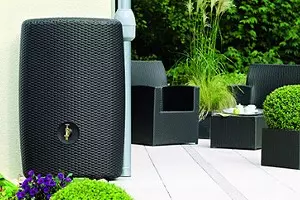

Photo: Garantia.
In the words of the middle strip of Russia, even a small attached roof is capable of providing about 2500 l of rainwater per season. It can be used for watering the garden and garden, washing the car, cleaning the premises, washing. Only for drinking and cooking, the atmospheric moisture is unsuitable - at least without cleaning. The rainwater collection system is convenient primarily by the fact that it does not require constant cash investments: it is only enough to spend on the installation of drainage, tank and pipes. The only problem is dependent on the weather. In the arid summer, it is not necessary to count on additional "influsions", but it happens in our latitudes.
It is believed that the guise of the girl is softer and safer plumbing. But if the house is not far from the city or industrial enterprise, it is better not to risk and order a chemical analysis of specialists to learn about the possible areas of its use. It is worth noting that not every roofing design is suitable for the catchment. There is a simple rule: the steeper of the skate, the faster the drain. And the faster plums, the less chances that the water is polluted along the road.
It should also be borne in mind that some roofing coatings have in their composition a substance dangerous to human health. With roofs, covered with copper tiles, asbestos cement plates, as well as materials containing lead, can not be collected rainwater. But the ceramic tile, roofing iron and bitumen do not carry threats.
The main components of the atmospheric moisture collection system are drained gutter and pipes. The durable are drains made from aluminum and titanic components. True, they are quite expensive. Budget decision - PVC-Stocks. But they are relatively short-lived, because they can crack under pressure of stagnant and frozen water. Designs containing copper or lead are excluded for the reasons we talked about above. Most specialists converge in the opinion that the prices of galvanized steel should be considered optimal in terms of the ratio of price and safety.
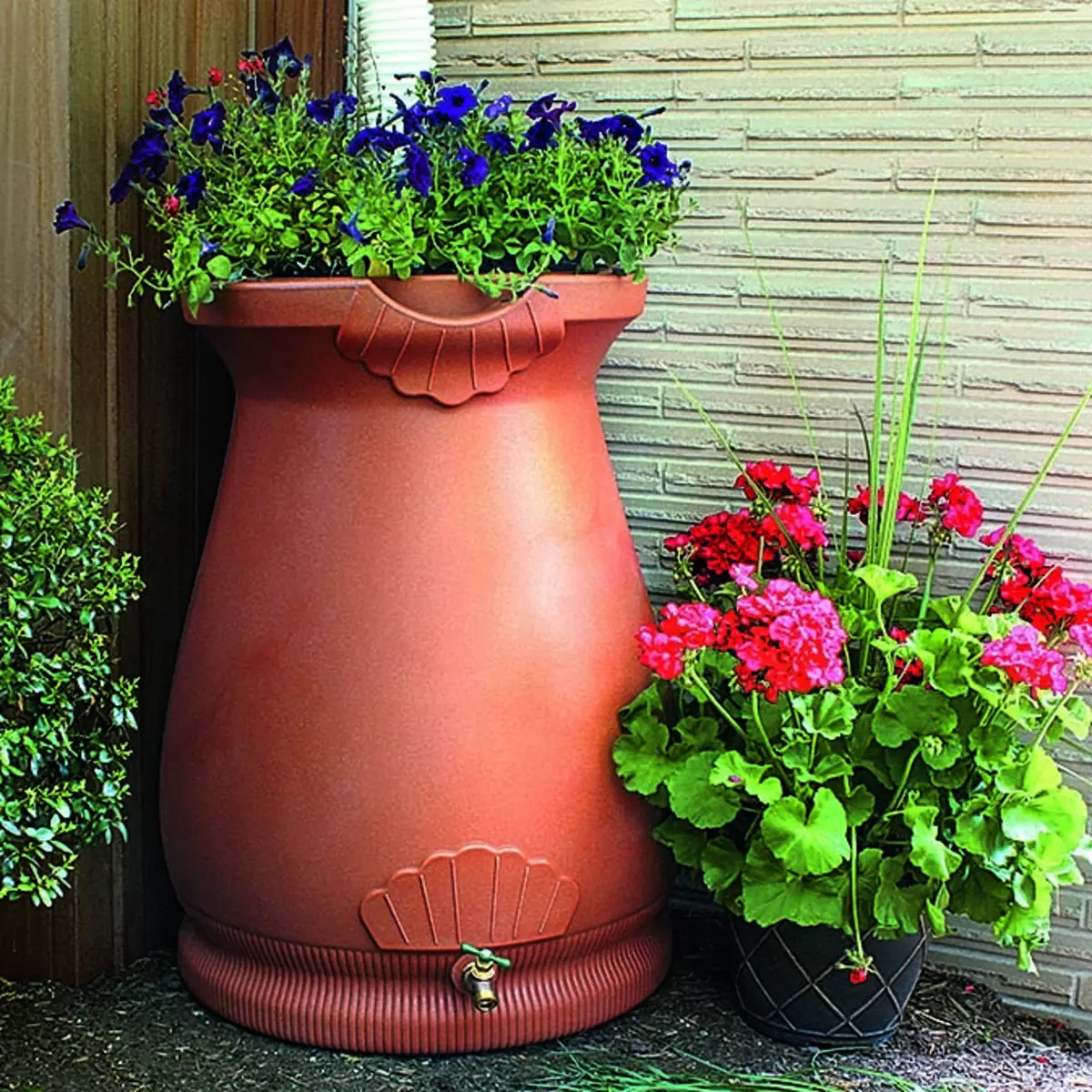
Photo: Good Ideas
The diameter of the drainage pipes is chosen based on the size of the roof. If the skate area is less than 30 m², pipes with a diameter of 80 mm are suitable, if more than 90 mm. In the regions where many precipitation falls, it is better to use a square or rectangular wastewater, since they have a harsh bandwidth than oval. To ensure good stock, the chute is mounted with a bias of 2-3 cm for 1 p. m. For every 10 m, it is necessary to install a receiving funnel and drainage pipe, otherwise the system may not cope with the flow of rainwater. The distance between the building wall and the drain pipe should be at least 5 cm, but not more than 7 cm. If the pipe is too close, the facade will constantly wet, if too far, may not withstand fasteners.
As a drive, it is possible to use a container made of chemically safe and non-corrosive material: concrete, polyethylene, polypropylene, galvanized steel. As for the design, the tank should have a hole for the drain pipe, a crane, a hole for the pipe, which will die exist water, filter separator foliage and lid. The volume of the reservoir can vary from 800 to 3000 liters depending on the size of the house and the number of tenants.
Rainwater collection system
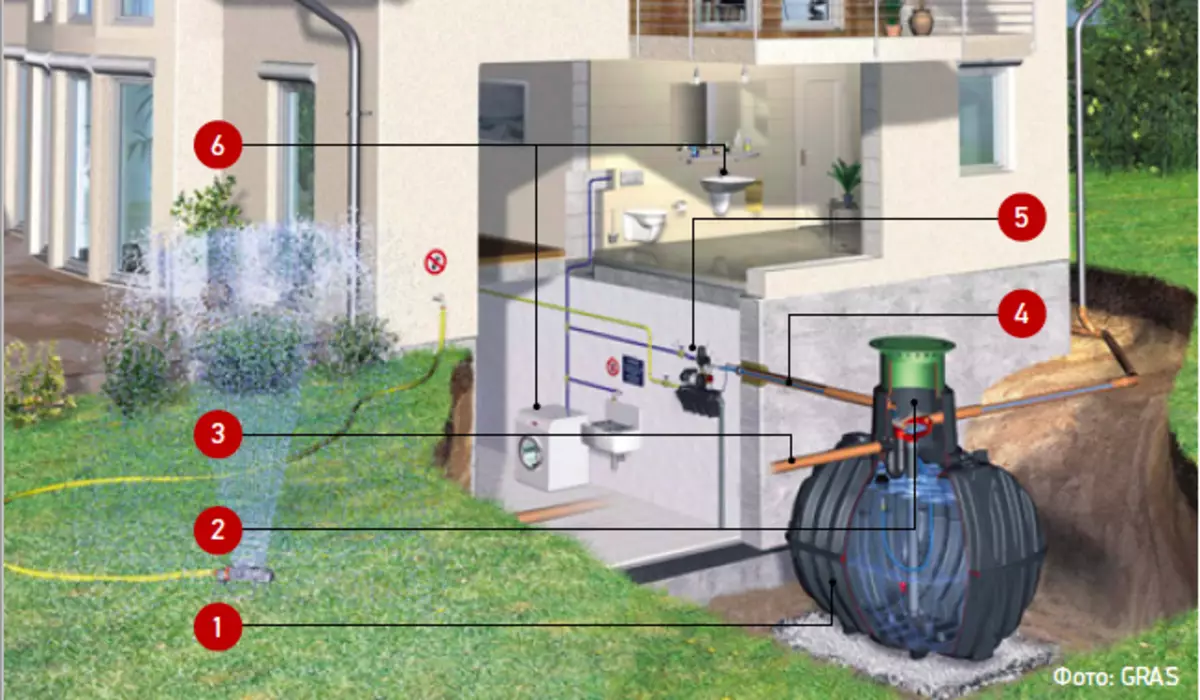
1 - underground tank with pump; 2 - filter; 3 - stock (overflow protection); 4 - pipeline for water supply to the house; 5 - pump control unit; 6 - water parsing points
The easiest way to put the Earth drive. But then the water will overheat on hot days and can bloom. In addition, the tank of impressive sizes takes a valuable area of the Drago area. Therefore, many homeowners prefer to plunge him into the ground. In this case, the supply of water from it will have to be carried out using a pump. To connect the tank to the water parsing points in the house and the standard PVC pipes are usually used.
For an underground installation, you need to dug a little more than the reservoir itself, and arrange a 20-minute thick on the bottom of a sandy pillow. Then put the tank, fall asleep with sand, connect the pump and pipes and close the neck with a lid. In the upper part of the tank make a removal, along which the excess water will be flushed into the sewer. Obviously, the rainwater used in the house must be clean. Many modern drainage designs are equipped with devices for delaying large garbage: grid with small cells, which are located along the grooves and in places of connection with pipes. Also, filters are installed to remove garbage: one at the entrance to the tank and one more or two at the outlet of it.
The underground waterboat system requires seasonal care. With the onset of cold weather, the pump must be reached and leave for storage warm, and the tank is tightly closed and fall asleep on top of a thick layer of sand to protect it from the freezing.

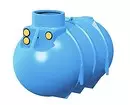

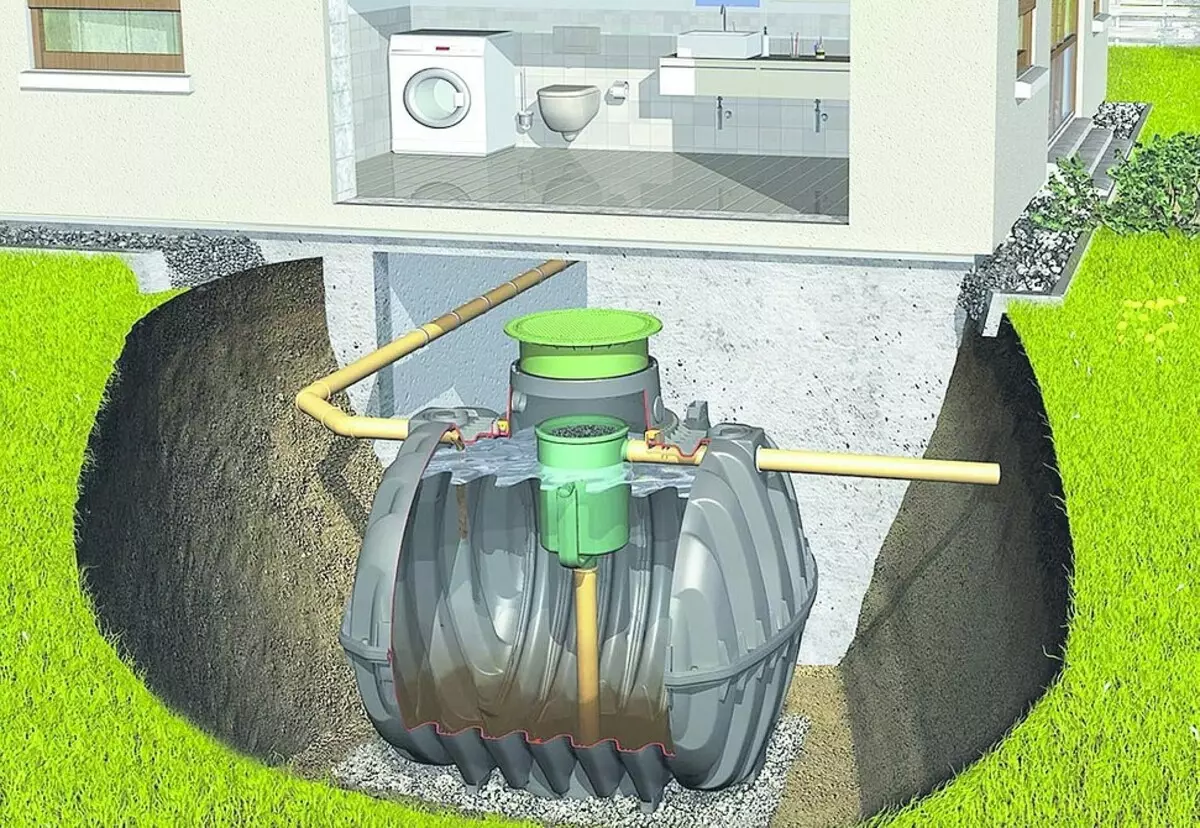
Tank for rainwater Carat S with an integrated filter. Photo: Gras.

Immersed containers are made of durable plastic. Filters and other equipment can be built into them. Cost of products - from 4500 rubles. Photo: Rewatec.

Rainwater tanks intended for ground-based installation are stylized under vases, Greek amphoras and even wicker baskets. Photo: Garantia
